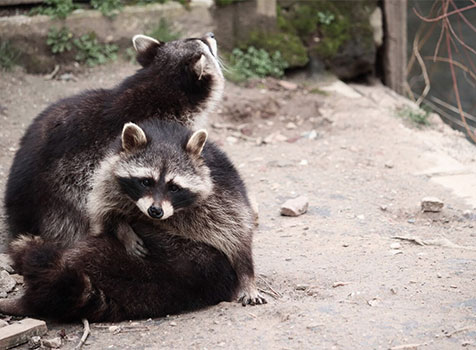 Living in harmony with nature is terrific until wildlife encroaches on your home territory. With its lush greenery and proximity to natural habitats, Hamilton often sees wildlife wandering into residential areas. Although it can be exciting to come across these animals, risks are involved for your family and property. However, with proactive measures and a few precautions, you can effectively safeguard your home against wildlife intrusion.
Living in harmony with nature is terrific until wildlife encroaches on your home territory. With its lush greenery and proximity to natural habitats, Hamilton often sees wildlife wandering into residential areas. Although it can be exciting to come across these animals, risks are involved for your family and property. However, with proactive measures and a few precautions, you can effectively safeguard your home against wildlife intrusion.
Here are some essential tips to protect your home
Seal Entry Points: Wild animals are skilled at spotting tiny gaps to enter your house. Make sure you examine your property thoroughly, inspecting areas like rooflines, vents, chimneys, and foundation or siding gaps. Seal any openings with sturdy materials like hardware cloth, caulk, or steel mesh to keep wildlife out.
Secure Trash and Food Sources: Unsecured garbage cans and compost bins can attract wildlife, including raccoons, squirrels, and rodents. Use wildlife-proof containers with tight-fitting lids to store trash securely. Pet food and bird feeders should be kept inside, especially at night, as they draw uninvited guests.
Trim Vegetation: Overgrown trees and shrubs can make it simple for wildlife to enter your attic or roof. Keep vegetation trimmed away from your home to eliminate potential pathways for animals to climb onto your property. Regularly prune branches that overhang your roof to prevent animals from using them as bridges.
Install Fencing: A physical barrier to keep wildlife out of your property can be installed with a sturdy fence. Choose fencing materials difficult for animals to climb or burrow under, such as wire mesh or vinyl-coated chain links. Ensure the wall extends below ground level to deter digging animals like groundhogs and skunks.
Use Deterrents: Various deterrents can effectively discourage wildlife from approaching your home. Motion-activated lights or sprinkler systems can startle animals and deter them from lingering on your property. You can also use scent deterrents, such as predator urine or commercial repellents, to create an unpleasant environment for wildlife.
Practice Responsible Gardening: Certain plants and landscaping features can attract wildlife to your yard. Choose native plants that are less appealing to wildlife or use fencing to protect vulnerable areas like vegetable gardens. Remove debris, brush, and clutter from your yard to avoid creating inviting habitats for animals.
Seek Professional Help: If you’re facing persistent wildlife issues despite taking preventive measures, don’t hesitate to seek assistance from professional wildlife removal services. Companies like AAA Kyles Wildlife Removal specialize in humane wildlife control methods and can help safely remove animals from your property.
Protecting your home against wildlife intrusion requires a combination of proactive measures and responsible practices. By sealing entry points, securing food sources, trimming vegetation, installing fencing, using deterrents, practicing responsible gardening, and seeking professional help, you can effectively safeguard your home and enjoy a peaceful coexistence with nature in Hamilton. Remember, prevention is crucial in minimizing conflicts with wildlife and ensuring the safety and security of your family and property—Trust AAA Kyles Wildlife Removal to assist you in maintaining a wildlife-free environment with humane and practical solutions.
